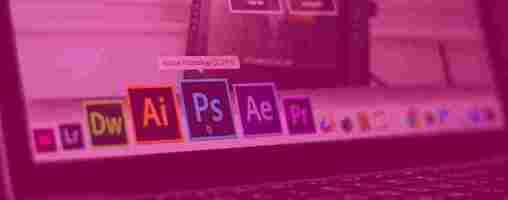InDesign vs Illustrator – The ultimate comparison
When should I use Illustrator vs Photoshop or InDesign?
When should I use Illustrator vs Photoshop or InDesign?
Illustrator and Photoshop are two widely used graphic design software programs. They are both great for creating simple graphics and layouts, but they each have their own strengths and weaknesses.
When deciding which program to use, it is important to consider your specific needs.
If you are just starting out in graphic design, Illustrator is a good choice. It is more versatile, and it has more features for creating graphics and layouts.
PRO TIP: When working with graphics, it is important to know when to use the right program. Photoshop is best for editing photos and InDesign is best for creating layouts. However, when it comes to creating vector graphics, Illustrator is the best program to use.
However, Photoshop is better if you want to create more complex graphics and layouts. It has more tools for editing images and text, and it is easier to create animation and effects.
If you are a professional graphic designer, InDesign may be a better choice. It has more features for creating publications, such as books, magazines, and websites.
It also has more features for creating graphics and layouts, and it is easier to create cross-platform designs. However, Photoshop and Illustrator are both capable of creating professional-quality graphics.
Illustrator vs Photoshop vs InDesign: What's the Difference?
Adobe’s software suite is the gold standard when it comes to creating or editing graphics. Knowing each applications strengths and weaknesses is key in order to make the most out of the suite.

In some cases, using the wrong software application can result in wasted time (and frustration) when using tools that aren’t as powerful.
In this article, we compare Illustrator vs Photoshop vs InDesign. I will take you through the merits and challenges that come with each application as well as a guide to choosing the best software for your creation.
Want to learn more about graphic design? Download the beginner's guide now! Enter your email address
Illustrator
Originally created in 1987, Illustrator is Adobe’s vector graphic software. Vector graphics, as opposed to raster-based graphics, use paths instead of dots (or pixels) to represent images. The distance between paths is calculated by an algorithm, so if you scale an image up or down, the quality remains the same.
Pros:
Graphics can be scaled up or down without loss in resolution
Multiple, flexible artboards
Object selection
Can place raster or pixel-based images created in photoshop
Cons:
Modifying existing images is quite difficult
Not ideal when creating multipage documents
Photoshop
Photoshop is Adobe’s raster graphic creation and editing software. Raster graphics are based on dots (or pixels) and are easier to modify because you have control over each pixel.
Pros:
Best when editing already existing images or graphics
Can easily modify common file types (think JPEG, GIF, PNG, TIF etc)
Industry standard for retouching due to the vast number of tools, filters, and special effects
It can also add graphics, filters, text, and animation to videos
Cons:
Single canvas
Graphics created on Photoshop aren’t ideal when scaling up or down. Your computer estimates where pixels should go which often results in jagged edges or pixelation
Not ideal when creating multipage documents
InDesign
InDesign is Adobe’s desktop publishing software. Primarily used to layout designs and images for print (e.g. brochures, magazines, and flyers etc), it can also be used to create simple vector designs.
Image Source
Pros:
The software is optimized to work with commercial printers. InDesign files are packaged so printers have your fonts and images
Best for creating multi-page documents. You can set up master layouts to easily unify a series of pages and easily and intuitively number pages.
Better equipped to work with large sums of text than Illustrator
Cons:
Its capabilities are limited when it comes to creating vector graphics.
You aren’t able to edit raster-based graphics
What should I use if I’m...
Editing photos
Photoshop is your friend when it comes to editing existing images. The software started off as a retouching application in 1990, and since then it has expanded and updated its toolkit, making it easier than ever to manipulate highlights or shadows, blur blemishes, or color correct.
Web design
Image source
Go with Photoshop when creating web pages or banners for social media because you will have the guarantee that your work is web-optimized and the right size.
Creating digital art
Image source
This is a toss-up between Illustrator and Photoshop and dependent on your preference.
Illustrator is great If you’re looking to create crisp, graphical illustrations that can scale up.
Photoshop is ideal if you’re looking to create detailed photo-based illustrations and would like pixel-level control over your output.
Wireframing
Image Source
If you’re designing a user interface or wireframe, Illustrator is handy because you can easily scale and move objects around. The software application also has a library of icons that can be used and modified.
Creating a logo, icon, or brand mascot
Image Source
When creating branding materials, you will likely want something that looks great blown up on a billboard or business card. Enter Illustrator. Your creations will be vector-based, which ensures that your branding stays looking crisp in every size. The software also offers multiple artboards, allowing you to brainstorm and refine ideas on the same file.
Creating business cards or flyers
Image Source: InDesign
This can be done on Illustrator or InDesign, my personal preference is for Illustrator as you have greater flexibility when creating graphics.
Multi-page documents (brochures, ebooks etc)
Image source
While InDesign doesn’t have much capability when it comes to editing or creating individual graphics, its power comes from being able to easily layout and rearrange pages of text and images.
It integrates with Adobe digital publishing solution, allowing you to create interactive ebooks and magazines.
Conclusion
When it comes to Adobe Illustrator vs Photoshop vs InDesign, it’s up to your personal preference. Some say Photoshop is easier to learn, but you’d be wasting your time using it to create a brochure or a logo. Similarly, Illustrator may be the safer bet when it comes to creating graphics of any size, but you lose out on creative filters and tools Photoshop has to offer and the ability to create layouts and templates in InDesign. Finally, what you gain in functionality with InDesign (e.g. layouts, compatibility with raster and vector graphics), you lose in power.
For these reasons, it’s abundantly clear that these software applications were intended to be used together. While you may have a favourite, knowing when and how to use them in conjunction will take your graphic design skills to the next level.
Ready to boost your design skills? Try GoSkills award-winning design courses!
Looking for some ready to use templates for Illustrator or Photoshop? Find what you are looking for here:
Illustrator Business Card Templates
Illustrator Resume Templates
Photoshop Resume Templates
InDesign vs Illustrator – The ultimate comparison
Marketing technology

by Amelie Timm |
The first step toward efficient, creative projects is a strong understanding of contrasting design software dynamics. We’ll help you take that first step by comparing two powerful software tools. Adobe InDesign and Illustrator each have unique, beneficial design functions. Here’s a quick rundown of each system, followed by an in-depth breakdown of their similarities and differences.
InDesign
Adobe InDesign is a program that is used to create both print and digital projects. This typically includes things such as books, newsletters, brochures and newspapers. InDesign is often used by graphic designers, as it has extensive editing potential. It’s also used by marketers from time to time.
Illustrator
Adobe Illustrator is a software tool used to create different graphics, such as illustrations, artwork, drawings and more. Both the Windows and Mac operating systems are capable of running Illustrator. It is a vector graphics tool, meaning it constructs images using different lines that form shapes.
Now that you have some details about each app individually, here are four areas of comparison for the two systems, along with a breakdown for each:
1. Single and multi-page projects
Both InDesign and Illustrator handle single and multi-page tasks, so it’s important to weigh the benefits before deciding which to use. When it comes to single-page documents, especially print projects, Illustrator has the edge. Business cards and posters are ideal for Illustrator because it manipulates image and text size. It also handles visual features precisely.
Illustrator is capable of creating multi-page projects but InDesign is the superior multi-page option. InDesign has a Master Page function, which allows users to edit numerous pages without editing them individually. Furthermore, InDesign is ideal for multi-page, as it automatically numbers pages.
2. Comprehensive drawing features
Though it may seem obvious that Illustrator is the more in-depth drawing software, it’s critical to learn nuanced differences between the two programs’ drawing capabilities. Furthermore, it’s vital to know where Illustrator is lacking. When looking to draw creative, enhanced designs, Illustrator is the right choice. The artboard has multiple options and provides plenty of space to draw and create crisp designs. The only time Illustrator struggles with images is editing, so retain an alternative program to edit photos.
InDesign does have a few drawing options, including a pencil tool and the ability to draw some lines and shapes. Also, drawings done on Illustrator can be imported into InDesign. This is helpful when a team member completes a multi-page project, as Illustrator is better for single-page projects.
3. Logo creation and manipulation for organizations
InDesign creates shapes for logos but lags behind Illustrator in quite a few ways in this area. Illustrator is perfect for logo creation because images in Illustrator are made to fit any size while maintaining original quality. Logos change placements and sizes, so software that reacts correctly to the changes is necessary.
Another valuable function that makes Illustrator great for logo manipulation is the typesetting features. It shapes text to the preference of an organization. InDesign is great for text-related projects as well but it doesn’t measure up to Illustrator. Remember that each organization’s logo needs are drastically different. This information should guide you toward your program choice.
4. Beneficial integrations
A crucial aspect of choosing design software is determining how well it syncs with other programs. When it comes to integrations, Adobe InDesign flawlessly corresponds with important systems. One compelling InDesign integration is with Canto DAM, a digital asset management system designed to manage files.
Digital asset management is a comprehensive file storage solution. DAM provides a central location to store assets safely. InDesign connects to Canto and gives users a connection to open images from their media library in InDesign. This integration is vital for businesses who use InDesign and cloud storage systems.
The dynamics of a venture evolve and the choice between these software will change as well. Understand their subtle differences to create strong projects.
To get more insight into these two dynamic systems, watch our brief Illustrator vs InDesign video here: